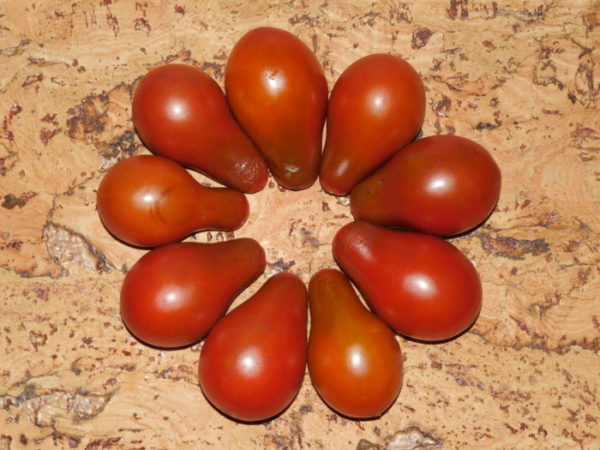
Recently, more and more gardeners are interested in new varieties of tomatoes. One of the finds could be tomato Jessica. It will definitely allow you to surprise colleagues of interest and delight relatives with unusual and tasty tomatoes. This article will give a full description of this variety, will talk about its main characteristics.
Jessica is a tall, mid-season tomato variety native to Argentina. Despite the origin, this variety can be described as unpretentious. Reviews of experienced gardeners indicate the suitability of the Jessica variety for cultivation in all regions, both in open and in closed ground. The variety is distinguished by a fairly high yield.
Content
Variety description, photos, reviews
Jessica's tomato has a rather tall bush (from 1, 8 to 2 m), so it should be tied up and remove unnecessary shoots. The leaves have a dark green color, shape without features. The fruits ripen in a bunch, bearing fruit to frost. The fruit is two-chamber, has the shape of a pear and has a dark cherry color. The weight of the fruits is not more than 100 g. Also, the characteristics of the Jessica tomato fruit include a sweet taste with a slight acidity, a fairly dense structure and a small amount of seeds.
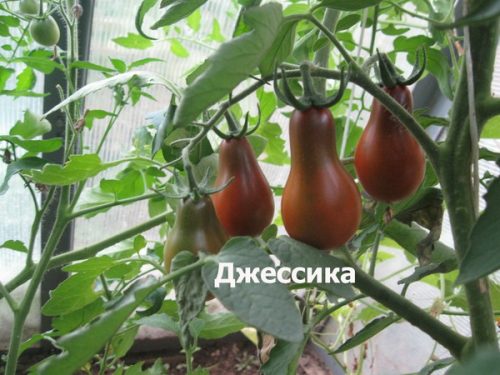
Productivity
This tomato belongs to the high-yielding varieties. The first inflorescence is formed over 6 or 7 leaves, the rest every 2 or 3 leaves. On average, 4–5 tomatoes are located on one brush. As mentioned earlier, the variety is quite fruitful. One bush formed from two trunks is capable of producing up to 40 fruits.
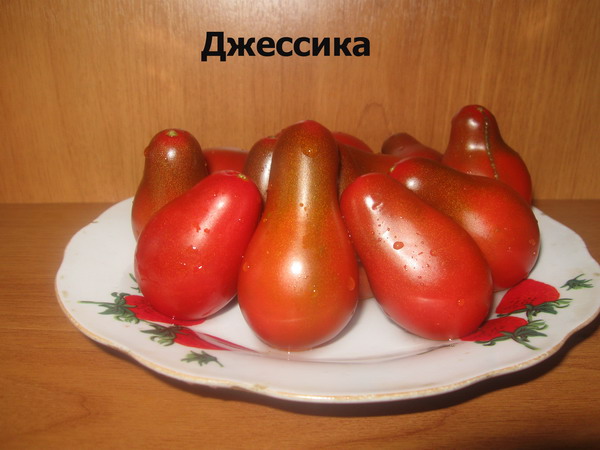
Use and storage
Jessica tomato fruits are great for various types of preservation and other home-made preparations. Their graceful shape allows them to look great whole in a jar with or without peel. This variety is used for making sauces, dressings, ketchups, juices and homemade dishes, as well as for freezing, drying and drying. Of course, sweet and small fruits are good for fresh consumption.
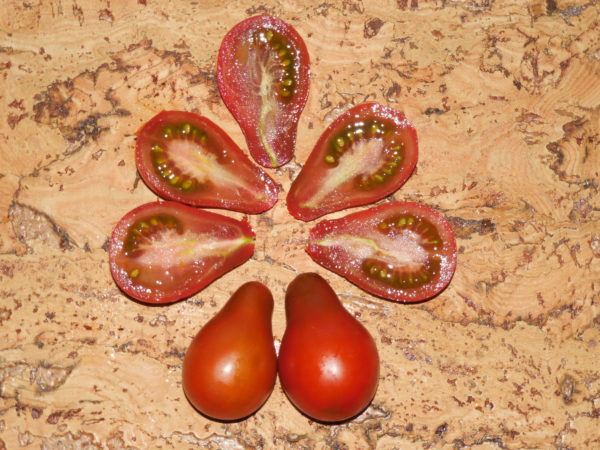
Features of cultivation and care
How to grow tomato Jessica in the open ground? When planting sprouts, it is necessary to leave the future bush an open area of soil.
What properties should the soil have:
- Fertility. This will provide the future plant with the necessary mineral and nutritional elements.
- Neutral acidity. The acidity of the soil can be overestimated due to the excessive amount of free hydrogen ions accumulated in it. This can prevent the plant from getting the right substances even from fertile soil. With increased acidity, the soil must be "deoxidized" by liming or using special means.
- High water permeability of the soil. This determines how much water the soil absorbs and how much moisture can be used by the plant in the future. Typically, the permeability of the soil is adjusted by adding natural sand.
When a bush of this variety ripens, no more than 4 stems are usually left, the height is adjusted depending on the method of garter. As the bush grows, garter stalks are required! As mentioned earlier, extra shoots must be removed along with the lower leaves, because they take the trace elements necessary for the ripening of the fruit. Unnecessary leaves should be removed very carefully, so that the fruit that has set is not opened and does not burn in direct sunlight.
It is also possible to thin out the crown so that air flows better to the young ovaries. Weeds and other plant debris should be disposed of.
Siderata or sideral plants are usually planted in a free area of the garden. Then the green part of the plants is cut (do not dig), dried and mixed into the soil.
The most common types of green manure crops:
- boboats;
- cereals;
- buckwheat;
- asters and others
Also, do not forget to loosen the soil around the bush. This must be done carefully so as not to damage the roots of the plant. As for the frequency of watering, in normal weather it is enough to water the bushes once a week. The first top dressing is carried out, planting seedlings, mixing fertilizer with soil in the hole. Then you can repeat top dressing with special fertilizers 2 or 3 times during the season.
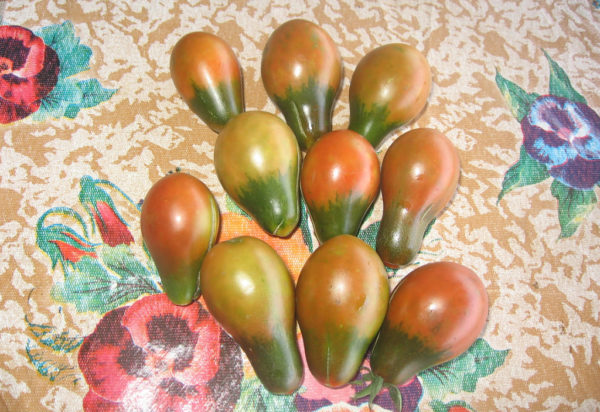
Protection against diseases and pests
The most common diseases among which tomatoes are exposed are:
- late blight;
- Septoria;
- mosaic;
- brown spotting.
Consider the simplest of them:
- Change the place of growing tomato. If you plant plants in the same place from season to season, this can lead to the accumulation of infections in the ground. Therefore, it is recommended to return the tomato to its previous place no earlier than two seasons.
- It is also not recommended to grow tomatoes in the soil where plants such as potatoes, peppers, eggplant and others from the nightshade family were previously grown. It is better if the onions, legumes, cucumber or perennial herbs precede the planting of the tomato.
- Of great importance is the preparation of seeds. Mandatory is their disinfection.
The timing of planting must be observed in order to ensure the resistance of plants to negative factors. - Prevention of the accumulation of infections in the soil is mulching, which was mentioned earlier.
Perhaps these are the most affordable preventive measures to increase the resistance of tomato bushes to disease.
Usually they are saved from pests by planting aromatic herbs such as garlic, wormwood, basil, etc. around the beds.
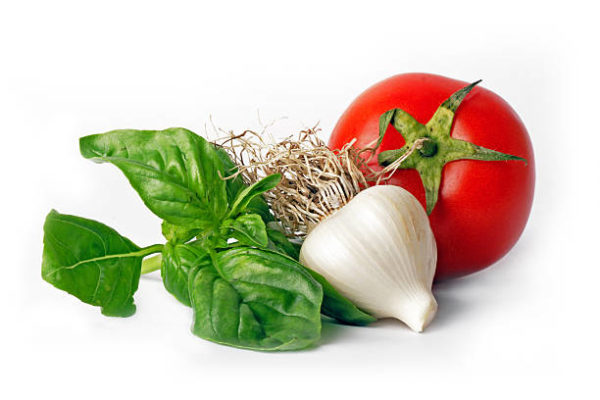
Seed collection, seedling preparation and planting
To ensure a quality crop next season, seeds are harvested from the most successful tomatoes. To do this, they are celebrated and allowed to fully mature. The extracted seeds are poured with strong saline and only those that remain at the bottom are selected. Floated seeds are unsuitable, so they are thrown away. The selected seeds are washed, treated with a solution of potassium permanganate and allowed to dry.
Jessica tomato seeds are planted on seedlings about 60 days before planting in the ground. For seedlings, Jessica tomato seeds are sown 60 or 65 days before planting.As a rule, the soil for this is prepared in the fall. In equal proportions mix soil from the garden, humus and sand. The resulting soil is stored on the street all winter.
It makes no difference where to sow the seeds. This can be done in separate containers or in one large box. It is important to remember that no more than three grains are placed in separate containers. Plant seedlings in such a way that in the process of increasing the sprouts in the tank there is room for adding soil.
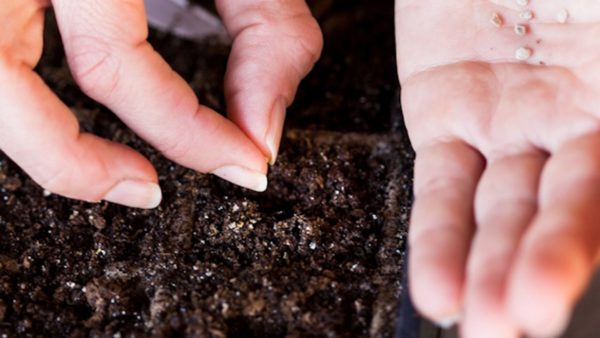
After, the soil must be treated with a weak solution of potassium permanganate, lightly spraying it from the spray gun. Then a transparent film is pulled over the container, and when the tomatoes begin to sprout, weak and nondescript shoots are removed. Then, the soil is periodically moistened.
As soon as 2-3 leaves appear on the sprouts, they are divided into separate containers (if they were previously planted in one box), while cutting off 20% of the main root. This process is called diving. It should provide seedlings with extra light, this will prevent the stem from stretching. Before planting in open ground, tomatoes are hardened, leaving in a cold place, for example, on the veranda. And in 3 days, you can put seedlings on the street in shade.
Tomatoes Jessica is a very unpretentious and prolific variety. It has high protective properties both against weather conditions, and before diseases and pests. These characteristics justify the search for seeds of this rare variety. Experiment, leave feedback and share your impressions!
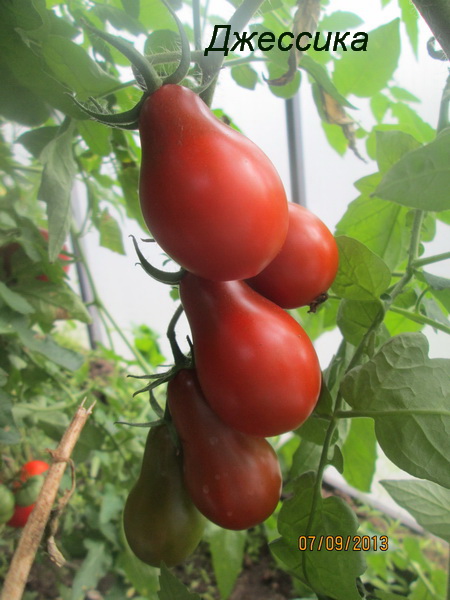
Advantages and disadvantages of Jessica tomato
So, among the obvious advantages of tomato Jessica in various reviews, the following are noted:
- unusual shape of the fruit;
- pleasant, pronounced sweet taste and rich aroma;
- high productivity (up to 40 fruits from 1 bush);
- fruiting duration;
- the possibility of growing both in open and closed ground;
- adaptation to various climatic conditions;
- resistance to diseases and pests;
- high shelf life;
- durability during transportation.
The highlighted disadvantages include:
- a tall bush requires increased attention (garter and removal of excess shoots);
- timely harvesting to prevent damage to the bush.
Perhaps these are all the shortcomings, since with elementary care, a quality crop is provided to you.
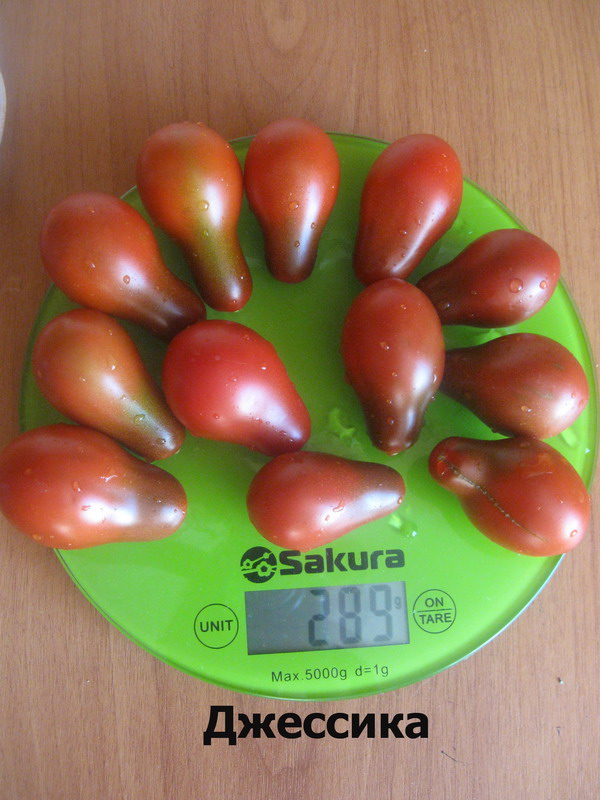
Reviews
Typically, novice gardeners are very careful about new and rare varieties of plants. Before planting, some people study thematic sites and forums, while someone prefers to get their own experience and plant several bushes for trial. A few reviews of those who have already become acquainted with this variety:
Anna, 39 years old. Novoblagodarnoe, Stavropol Territory:
“Very interesting tomatoes, maroon, funny and tasty. The bush is tall, fruiting to the very frosts. I plan to plant tomatoes of this variety next year as well. ”
Nina Alekseevna, 62 years old. Voronezh region:
“This is the best grade for conservation! They look beautiful, do not burst. I’ve grown it in open ground, next year I’ll try it in a greenhouse. ”
Galina Grigoryevna, 51 years old. Vologodskaya Oblast:
“For some reason, Jessica has grown raspberry-colored, I liked the fruits in their pear-shaped form, sweet without sourness. For me, the best variety this year. "
Larisa Vladimirovna, 56 years old. Ryazan:
“The yield and taste of a tomato are on top; there are no difficulties in collecting seeds. I really like this variety, I am glad that I managed to find it. "




 Low-growing tomatoes, without pinching: 5 of the most delicious varieties
Low-growing tomatoes, without pinching: 5 of the most delicious varieties Why tomato seedlings grow poorly
Why tomato seedlings grow poorly We grow a tomato in a shell
We grow a tomato in a shell Growing tomatoes without watering according to the method of Kazarin
Growing tomatoes without watering according to the method of Kazarin